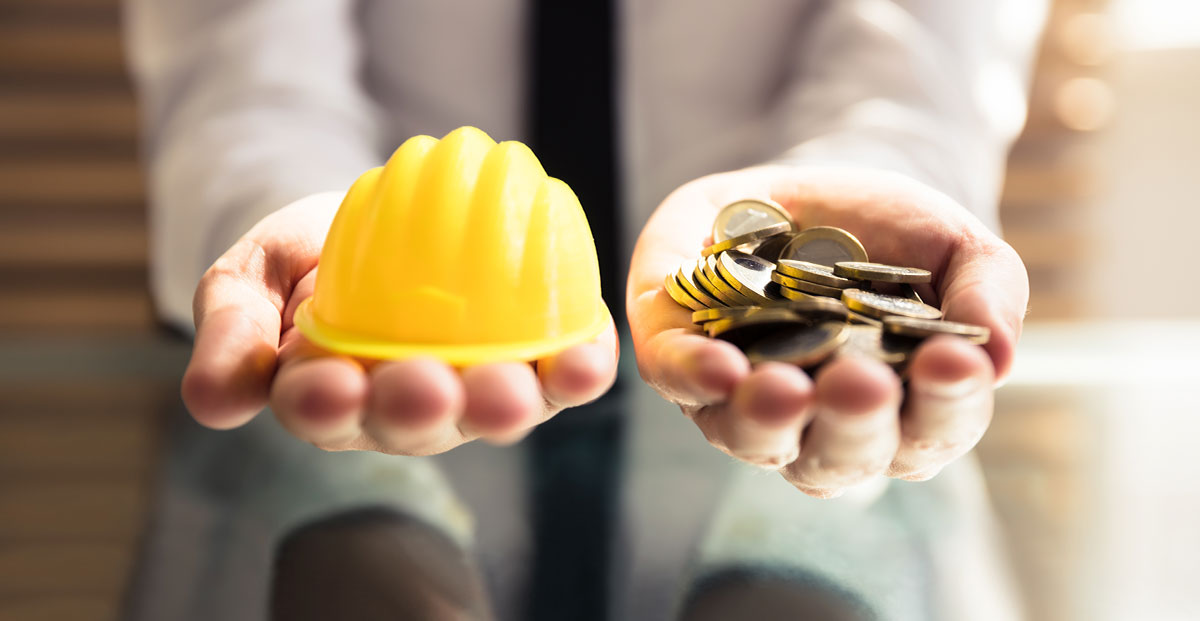When the concept of value engineering first appeared in the 1940s, the aim was to promote value through careful analyzation of products and components. This is accomplished by improving performance either with a cost increase or by reducing cost without sacrificing performance. Over time, it was determined that value can only be created if functionality and durability are a top priority.
The concept of value engineering sits hand in hand with the philosophy behind commercial building roofs. When you prioritize functionality and durability in the roof of a commercial building, you end up with a roof that exceeds its design lifespan. This means that you amortize its cost over a longer period of time, thus creating value. Is your commercial roof aligned with the value engineering concept?
Value Engineering is Still Relevant
Many concepts created in the 1940s no longer have a purpose in daily life, but value engineering is still relevant to building owners and facility managers. Value engineering is extremely prevalent in the construction industry—if you ask a roofing contractor to achieve a target cost, they’ll likely use value engineering in order to achieve it.
Pursuing value engineering without careful consideration has the potential to get you in trouble, however. In theory, any time you substitute materials within the value engineering concept, you’re supposed to end up with the same performance for a lower cost. If you don’t do this right, you’ll end up with a lower performance material for a lower cost. Although this material may cost less at the outset, its failings will accrue in maintenance costs and structural failures.
When choosing a value engineering model for a commercial building roof, it’s important to stay engaged with the process from the beginning. Don’t let contractors surprise you with materials that you haven’t yet vetted—and maybe hire a roofing contractor to keep the process on track. Top-flight contractors and architects will use value engineering software that can model the use of different construction materials and perform real-time cost-benefit analyses.
Emphasizing Durability and Functionality in Commercial Building Roofs
Value engineering can help companies achieve target costs, with durability and functionality as the ultimate goal. How do these aspects help ensure the longevity and cost effectiveness of a commercial building roof?
It all comes down to maintenance and safety. Durable materials don’t break as often in the long run, and functional roofs are safer to maintain. Here are a few value engineering trade-offs that commonly offer a reduced cost without sacrificing too much durability.
- Replacing adhesives with fasteners
An adhered roof membrane is the safest and most durable option for a commercial roof. Replacing adhesives with fasteners will make the roof almost as durable, but with a few key trade-offs. Since fasteners penetrate the insulation layer, your building won’t be as efficient with regards to heating and cooling. Also, this may make the membrane more susceptible to impacts.
- Replacing tapered insulation with additional drainage
Ponding water is a huge problem for low-slope roofs, but tapered insulation helps shed water. This can be an expensive solution, however. Adding more roof drains may be a less costly option—they can take care of any ponding that the lack of tapered insulation might promote.
- Altering Construction Details
Construction techniques can make as much of a difference in terms of cost as the materials themselves. Installing counterflashing in two parts is best practice, for example, but a single-piece counterflashing is simpler and less expensive to install. If performed with care and consideration, the simpler technique may end up costing less without sacrificing durability in the long run.
Each of these three examples—which are the tip of the iceberg when it comes to value engineering for commercial roofs—comes with drawbacks. This means that building owners and facility managers need to think very carefully while value engineering. If your building is in a temperate climate, you might not care if fasteners decrease the R-value of your roof, but if you live in an area like New England, then an adhered membrane might not be optional.
Value Engineering Should Never Sacrifice Rooftop Access
With value engineering, your commercial building roof may avoid serious deficits to its durability, but there will always be tradeoffs. It’s likely that you will need to maintain a value engineered roof more often, and it’s certain that you’ll need to inspect it more carefully. This means investing in a cost-effective system of roof access walkways, cable tray supports, and pipe supports. These will help get maintenance workers across your roof safely and quickly, while minimizing the impact of roofing infrastructure on a value-engineered roof.
By creating a rooftop access and support system that is both functional and durable, building owners can achieve their cost targets while ensuring that the roof stands the test of time, no matter how it was built.




